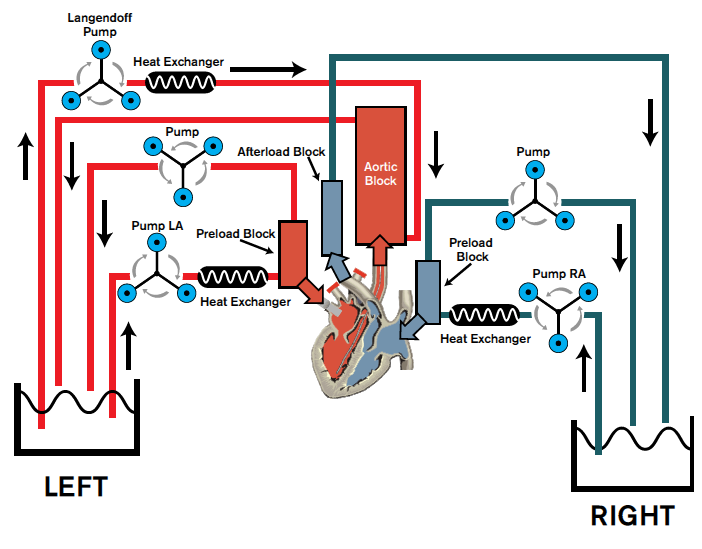Differences between Working (Ejecting) Heart and Biventricular Working Heart
In normal Langendorff and Ejecting Working Heart studies (acc. to NEELY) measurements are done only on the left ventricle. The right heart side is nourished via the coronaries but does not fill with and eject fluid. Right heart diseases are under increasing scrutiny as the effects of chronic pulmonary conditions have been discovered to create distinct right heart pathophysiology. Additionally, advances in cardiac electrophysiology have characterized spiral patterns and complex electrical waves of activity which underlie arrhythmic conditions, the study of which may be more relevant in a fully biventricular ejecting heart model. Ex vivo perfusion of heart isolated from diseased models with Right Ventricular Hypertrophy (RVH) following prolonged partial pulmonary ligation is also possible, allowing the same studies that have been done previously on normal hearts to be replicated on RVH hearts.
Our Biventricular Working Heart system is based on the IH-5 Working Heart platform but with an added, decoupled perfusion circuit for the right heart. The preload pressure of the right heart is, like the left heart, achieved with a water column, only this time set to the lower pressures of the right atrium (<5 mmHg). The patented afterload system is used both in the aortic block to simulate peripheral resistance and in the right ventricular afterload block to simulate lung resistance. Both afterloads can be set by the researcher over a wide range covering normal, hypotensive and hypertensive pressures.

